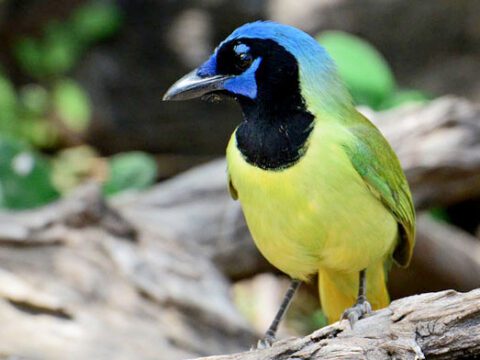The Birth of Natural Sound Recording
By Tim Gallagher
From the Winter 2015 issue of Living Bird magazine.
January 15, 2015
One of the most enduring legacies of the Cornell Lab’s early days is surely its pioneering efforts in the study of wildlife sounds. The field of “biological acoustics” was virtually invented here in the late 1920s, just a couple of years after the 1927 Al Jolson film, The Jazz Singer, amazed audiences around the world with its synchronized sound, signaling the birth of talking movies.
Arthur Allen quickly realized what a boon sound recordings of birds would be to ornithology students. In his classes, he had already been emphasizing the importance of knowing bird songs and calls to be able to identify species, but unfortunately no recordings of bird songs existed. Then, by a stroke of luck, the Fox-Case Movietone Corporation came to Allen for help in recording bird songs. Allen took them to nearby Renwick Park (now called Stewart Park) at the southern end of Cayuga Lake in Ithaca.
At first the technicians from Fox-Case were unable to make any recordings. They would approach the birds with their massive equipment and scare them away. Then Allen took over and set up a remote microphone beside a known singing perch of a Song Sparrow, where he knew the birds would return and sing, and he was able to make a recording. On that historic day, he recorded Song Sparrow, Rose-breasted Grosbeak, and House Wren—the first recordings ever made of birds in the wild in North America.
Of course, the Movietone recording system left much to be desired. Bulky, difficult to use, and primitive, it would convert sound vibrations into electrical impulses and then into light of varying intensity, which was then captured on motion-picture film. After developing the film, the process was reversed, converting the light images back into electrical impulses, which were then changed back into sound.
But Allen was fortunate enough to have an eager team working with him in this sound-recording endeavor. His grad student Peter Paul Kellogg, who had begun teaching ornithology classes at Cornell in 1929, jumped right in and started addressing the many challenges of this new technology.
“We now understood the principal problems in recording and the shortcomings of the equipment,” Kellogg wrote. “We understood, too, that if we were to achieve any kind of perfection, we would have to develop our own specialized equipment and techniques for field work.” (This emphasis on developing new technologies has long been a hallmark of the Lab.)
They were joined by Albert Brand, a former stockbroker who had left his financial career in 1928 and come to Cornell as a special student. He funded much of their early sound work, buying equipment and financing expeditions. He also produced the first record album of bird songs.
Another important figure at this time was Peter Keane—a Cornell undergraduate who spent most of his spare time at the Lab. (Keane passed away recently, in early 2014, at the age of 103.) He came up with the concept of using a huge acoustic dish called a parabola to record birds, making it possible to isolate the sound of an individual singing bird. The team made their first parabolas themselves, casting them and shaping them by hand. The parabola has been a universal tool of wildlife sound recording ever since.
Kellogg went on to develop the design concept for the first portable tape recorder during his sabbatical leave in 1949–50. The recorder, manufactured by the Amplifier Corporation of America in 1951, weighed less than 20 pounds and revolutionized the recording of wildlife sounds in the field.
A remarkable amount of groundbreaking work was accomplished in those early years. Although the Lab’s sound collection only had recordings of 31 bird species by the end of 1931, it was already the largest birdsong collection in the world. But that was only the beginning. The Lab’s Macaulay Library now has tens of thousands of archived sounds from a wide range of wildlife species, including birds, bats, whales, elephants, frogs, toads, fish, insects, and more.
The pace of innovation in sound studies at the Lab has never slowed. The Lab’s Bioacoustics Research Program is a hotbed of activity, constantly designing new technologies and equipment to monitor the wildlife of the world: remote recording devices to detect forest elephants in Africa, whales and other sea life in the oceans, migrating birds flying high overhead at night, and so much more. The group has even developed and deployed a sound-detection system in Massachusetts Bay that identifies whales present in the bay and warns ships to slow down and avoid colliding with them.

All About Birds
is a free resource
Available for everyone,
funded by donors like you
American Kestrel by Blair Dudeck / Macaulay Library






